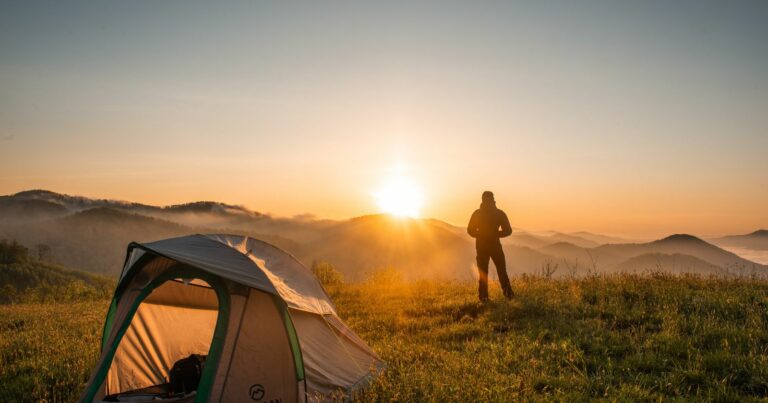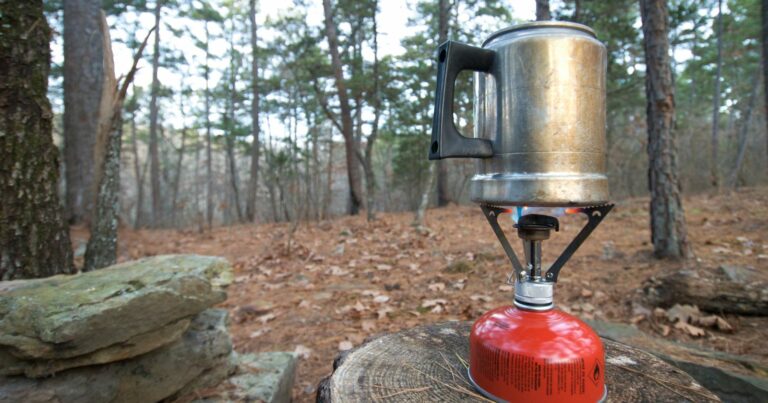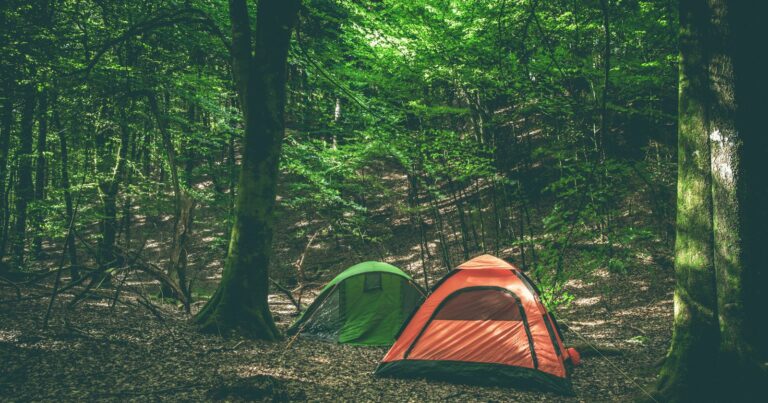How to Sleep Soundly in a Forest Shelter
Roughing it in the great outdoors can be an amazing experience. But if you’re new to camping, the idea of sleeping in a shelter in the forest might make you toss and turn at night. You picture yourself shivering on the cold, damp ground, unable to get any rest.
Not to worry! With some basic bushcraft skills, you can build a sturdy forest shelter and get a good night’s sleep out in the wilderness. In this post, I’ll walk you through the step-by-step process so you can relax and recharge even when camping off the grid.
First, scout around for a suitable spot to build your shelter. Look for a flat area away from standing dead trees or rocks that may fall. The spot should be dry and elevated if possible.
Next, collect materials from the surrounding woods to construct a basic A-frame shelter. Use fallen logs or branches that are waist-high. Crisscross two of them on the ground and lean a longer log against it to form the roof. Cover the sides with shorter sticks, leaves, or tarps.
Make sure to pile plenty of brush, grass, leaves, or pine needles inside the shelter for a soft, insulating bed. If you have a sleeping bag, lay it over your natural mattress. Otherwise, layers of sticks tied together with duct tape can make a primitive backwoods bed.
Once your shelter is prepped, you can comfortably unpack and settle in for the night. The enclosed space will keep you warmer than sleeping exposed. And you’ll rest easy knowing rain, wind, and critters can’t get to you.
Wake up refreshed, knowing you succeeded at a true wilderness challenge – sleeping sheltered in the forest like a veteran outdoorsman!
Pick the Perfect Spot
Choosing the right location is key to building a safe, comfortable wilderness shelter. Look for:
- Flat ground: Steep slopes put you at risk of sliding or shelter collapse. Go for level areas.
- Dry surface: Prevent dampness and mold by situating your shelter on high, dry ground. Dig trenches if needed.
- Sturdy supports: Pick a spot between standing trees, boulders, or logs that can anchor your shelter. Avoid dead branches.
- Clear sightlines: Don’t position your shelter at the base of a hill or in thick brush. Opt for open areas with good visibility.
Take time to prep the site by clearing sticks, rocks, and brush. Now you’re ready to start constructing.
Collect Shelter Building Materials
A forest is a handy hardware store when you know what to look for. Gather:
- Fallen logs and branches: Look for waist-high logs 4-6 inches in diameter to use as base supports. Grab branches to layer the frame.
- Bark, leaves, grass: Use these natural materials to insulate and waterproof the shelter walls and floor.
- Tarps, plastic sheeting: Bring lightweight tarps from home or garbage bags as water barriers.
- Rope, duct tape, screws: Use gear from your pack to lash and secure the frame pieces.
Stack materials close by as you work. Avoid damaging live trees and plants as you collect.
Construct a Basic Forest Frame
The classic A-frame design is a sturdy choice for backpackers. Arrange as follows:
- Lean two logs together and bind at the top.
- Crisscross two more logs on the ground as base supports.
- Lash horizontal branches on both sides to complete the walls.
- Cap the roof with bark or a tarp to repel rain.
Add side panels, doors, or skylights as desired. Take time to tightly tie and tape all joints. Safety first!
Build a Comfortable Sleep Surface
Now make a natural mattress inside your shelter for quality rest:
- Dry grass and leaves: Pile at least 12 inches deep for cushioning.
- pine needles: Fluffy and insulating for added comfort.
- Woven twigs: Interlace with rope for elevation off the ground.
- Sleeping pad: Use an inflatable or foam pad for extra padding.
Fluff often and add more materials as needed. A thick bed insulates you from the cold earth.
Sleep Snug as a Bug
You’ll be amazed how toasty your hand-built shelter can be! Follow these tips for a cozy night:
- Lay insulating blankets: Use wool, synthetics, or your sleeping bag as top layers.
- Wear warm clothes: Don thermals, socks, and a hat to bed down, even in summer.
- Crawl in fully: Get your entire body, including extremities, inside the shelter.
- Snack before bed: Eat a high-calorie snack to fuel your internal furnace.
- Use a hot water bottle: Fill a bottle or bladder with boiling water for natural warmth.
Wake up refreshed! Proper preparation means you’ll sleep as soundly sheltered in the woods as you would at home.
Practice Low-Impact Camping
Your forest home should leave no trace when you depart. Follow Leave No Trace principles:
- Dismantle shelters and scatter natural materials.
- Pack out all trash and leftovers.
- Bury human waste at least 6 inches underground.
- Stick to designated trails and campsites.
- Leave vegetation, rocks, and habitats undisturbed.
With sustainable camping practices, we can protect wild spaces for the future.
FAQs
What size shelter should I build?
For 1-2 people, construct a shelter approximately 4 feet wide, 6 feet long, and 4 feet tall. Make it bigger if more people need to fit inside. Just keep it small enough to stay warm with your body heat.
How do I make sure no rain leaks in?
Overlapping layers of bark, tarps, or plastic sheeting help make the roof watertight. Angle the materials so water runs off the back. Plug any gaps around joints with moss or mud.
What do I do if insects or small critters get in?
Keep food sealed and stored outside to deter bears and rodents. Let midges and mosquitos out – don’t swat! You can drape mosquito netting over your sleeping area if they persist.
Is it safe to have a fire inside or near my shelter?
Never light an open campfire in a small enclosed shelter! The fire risk is too great. You can build a fire ring several feet away and rotate to warm yourself as needed.
How can I make sleeping on the hard ground more comfortable?
Pile up as much insulating, cushioning material as possible underneath you. Use a sleeping pad or air mattress if car camping. Sleep on your side in a semi-fetal position to minimize contact with the ground.
Sleeping in a shelter you built deep in the forest may seem daunting for first-timers. But with smart site selection, sturdy construction, and comfy bedding, you can get peaceful shut-eye sheltered under the stars. Give it a try and enjoy recharging overnight in nature’s masterpiece – the woods!







